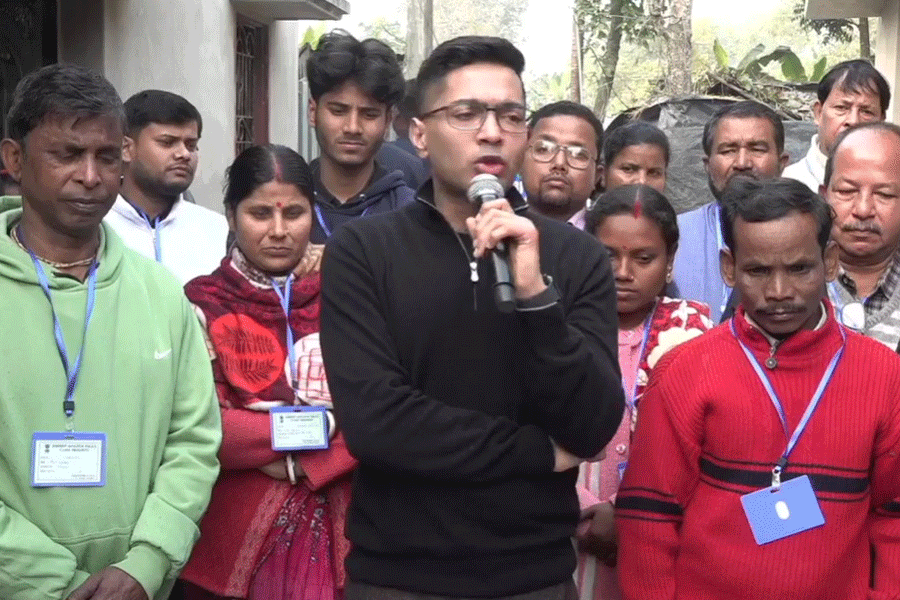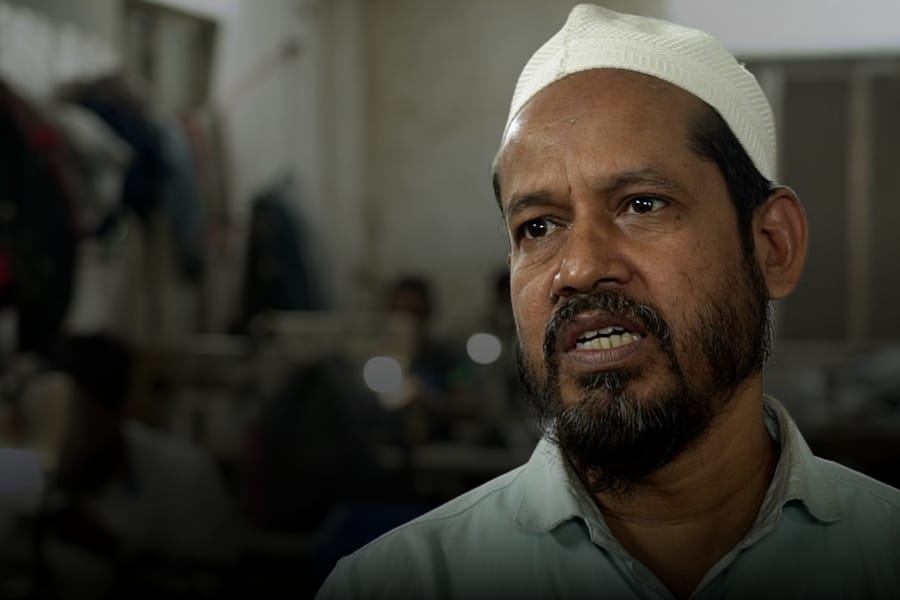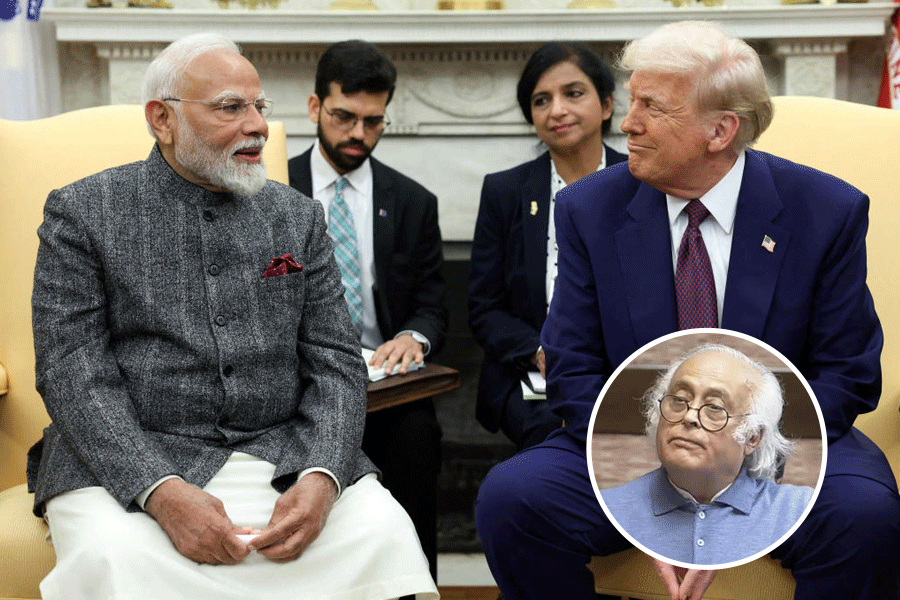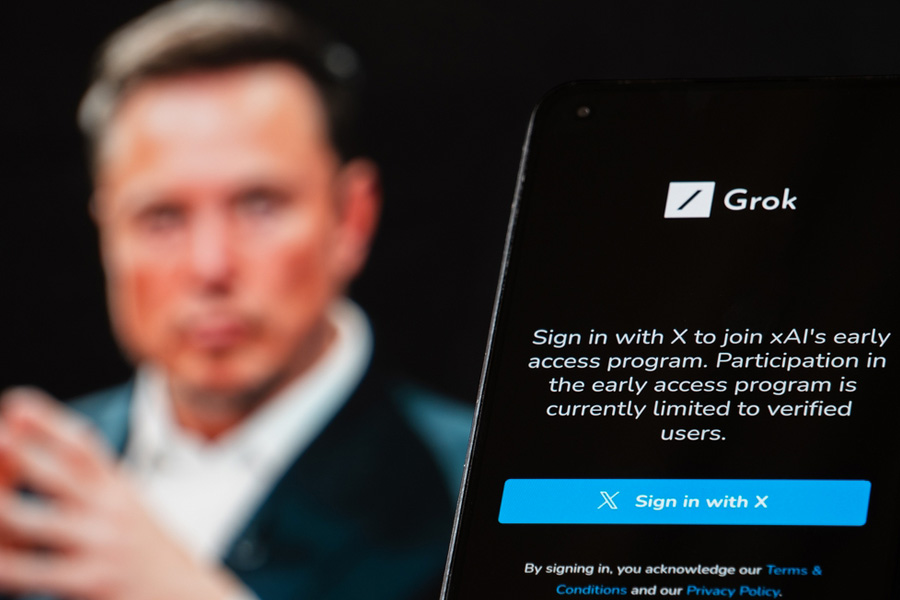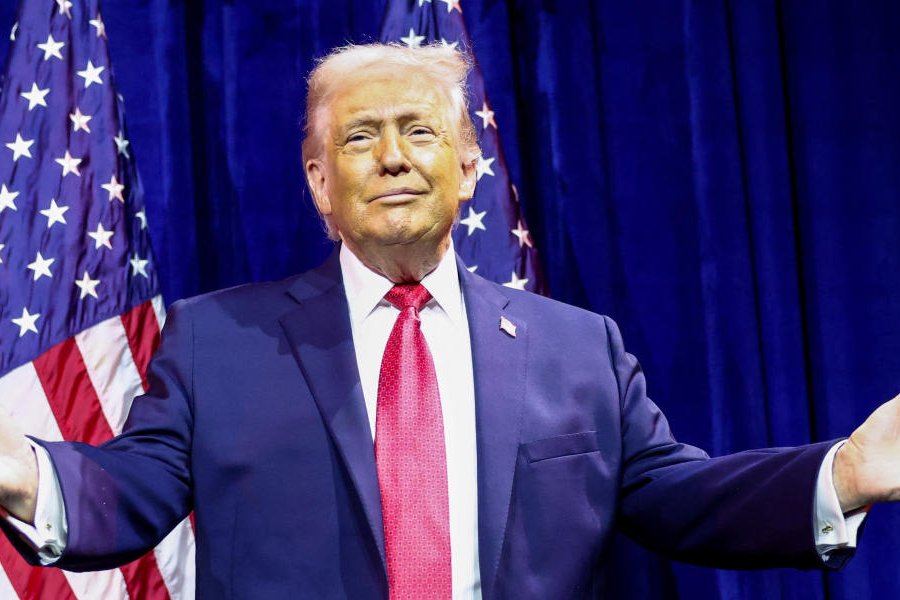A ‘rishi’ looking to be a ‘raja’; a clutch of smartphone brands ready to unveil their latest avatars; and service providers trying to turn their onetime terror, Twitter complaints, into a public relations tool
THE CROSSOVER
One big idea that faces a reality check in the new year
SANKARSHAN THAKUR
 |
The hubbub of political power in India, or its predecessor entities, has seldom existed unaccompanied by the corrective — and often contrary — decibel of the moral voice. Rajas had their rishis, the sultans their sufis, even the merchant-kings of Europe came informed by more than just the motive of profit; they had the Church and contentious burdens of the White Man.
Elected Prime Ministers have civil society. Under the current one, the moral voice is an entity called the National Advisory Council, institutionalised under the tutelage of Sonia Gandhi, dowager-regent of the UPA. It could well be that such co-option of civil society created a counterblast whose implications we are probably yet to fully understand.
When Anna Hazare-Arvind Kejriwal raised their standard of reform two years ago they grabbed the nation’s eyeballs and the Establishment’s neck. It was a stir that led many — from callow idealists to disruptive town criers — to mistake it as India’s Tahrir Square, a burgeoning bivouac that would close siege on the institutions of state and eventually impose on them a new Magna Carta of “people’s power” whose central edict would be the “Jan Lokpal”.
The institutions held. The sit-ins melted. The Lokpal became a disputed phantom desperately seeking incarnation in the Houses of Parliament. The Hazare-Kejriwal tandem came apart. Then Kejriwal did what few of his preceding ombudsmen of power politics have bothered with or dared. He joined power politics.
Mohandas Gandhi, whose name and symbolism Kejriwal clearly wanted to invoke — his crossover was formalised on October 2 — never ever did, choosing to remain across the moat from power, even suggesting, however weakly, that the Congress should disband itself now that it was done with achieving its objective of independence for India.
Jayaprakash Narayan (JP), who became the rallying force of what many called India’s second freedom struggle — the campaign against Emergency in the mid-1970s — similarly eschewed power. He swore the Janata Party government to commitments to Gandhi’s ideals at Raj Ghat in 1977 and quietly watched its swift and messy descent from his deathbed in Jaslok Hospital.
Kejriwal claims the fibre of Gandhi and JP — a moral voice raised against derelictions of the political establishment — but he has cut himself a different cloth. He no longer believes it is quite enough to try and inspire changes from the outside; politics is best changed — or not changed — by politicians. It’s a lesson he may have learnt from the incomplete course of the “Jan Lokpal” effort — the political class made promises that were all well-meaning, never really meant.
What Kejriwal is in the process of attempting is many things. To many among his civil society colleagues, Kejriwal has cleaved a path they dispute. Hazare recoiled quickly from the idea of active politics; Kiran Bedi, another lead act of the “Jan Lokpal” stage, pulled away, noticeably equivocal on whether she will embrace politics at a later stage.
Others like Aruna Roy, Medha Patkar, Shekhar Singh and Rajendra Singh have chosen not to comment but their outlook remains distinct from
Kejriwal’s because they have displayed no copycat temptation for power politics.
But what the Gandhi-hatted spearhead of India Against Corruption is attempting is also singular and unique.
Government servant to lobbyist to protester to disobedience activist to politician is a transition few have even attempted, much less achieved. Ever so often candidates for crossover have erupted on the public skyline — a G.R. Khairnar, a K.J. Alphonse, an Arun Bhatia — but none of them had either the energy or the ambition to attempt a crossover.
At 44, Kejriwal is arguably India’s most powerful politician without a single vote to his name. Or a political party to call his own. He has presented himself to be reckoned with, a man who faults nearly everything that has so far transpired in our multi-party democracy; a man who purports, almost single-handed, to right what he rails against.
He will hope to do better than his proxy foray into the Hisar by-election in October 2011, for he has now entered an arena that will demand more of him than just raising questions and flinging darts. He will be asked questions, he will have darts flung at him; he is now one with those that he has so far been lavishing with derision — the political class.
It’s a hard club: they ask for tickets at the gate and those tickets only come from electoral success. Kejriwal needs a vote to his name, many more, in fact, than just one. Each one will test him, and he will probably learn that very few are given away solely for displaying white-capped virtue. The transition from rishi to raja will require more than a new cut of cloth.
PHONE WAR
SAUMITRA DASGUPTA
 |
Thorsten Heins will be hoping that Research in Motion (RIM) doesn’t bungle the launch of the BlackBerry 10 smartphone again.
Last June, Heins — the new CEO at Toronto-based RIM — was forced to call off the launch of BlackBerry 10, the new operating software that is supposed to lay the foundation for a new breed of smartphones from the BlackBerry stable.
Heins, pitchforked into the hot seat almost a year ago to resurrect the fortunes of the faltering giant, has been pinning big hopes on the BlackBerry 10 as RIM prepares to take the fight to Apple, Samsung and a host of other competitors that have come out with a raft of Android devices.
The BlackBerry 10 launch is tentatively fixed for January 30 — and will be the first of the big product launches of 2013. Heins pushed back the launch when he felt that the prototype that his boffins had put together wasn’t glitch-free and ready to go to market.
 |
Competition has become so intense that companies are under pressure to come up with near-perfect gizmos that promise a tremendous user experience. Buyers have become hugely intolerant of product snafus and won’t hesitate to beat up on a storied brand if it falls short in any way.
RIM has a glaring hole in its gadget repertoire: it doesn’t have an LTE (Long Term Evolution) smartphone. Carriers in the US have been rolling out LTE networks that allow faster download speeds. They prefer to bundle the service with devices that allows them to peddle higher-value data plans.
The Apple iOS and the Android devices have moved in quickly to meet this demand, leaving
BlackBerry badly adrift. The BlackBerry 10 will be RIM’s first LTE product. But has it left it till too late?
 |
Sometime in the middle of 2013, Microsoft is expected to make its thrust into the smartphone market with its Surface Phone. Its Surface tablet has met with mixed reviews since its launch this year — but gadget geeks will be waiting to see whether Microsoft CEO Steve Ballmer is able to turn the tech giant around and deliver a device rather than a bit of elegant software that can wow the world.
The Surface Phone will allow the user to toggle between the full version of Windows 8 and Windows Phone 8 — but it’s not clear why this should be such an attractive proposition.
Apple and Samsung — the new-age versions of Tweedledum and Tweedledee — have been slugging it out for so long in the smartphone market that no one can ignore the products they launch or the patent battles they fight in the courts around the world.
The aficionados are busy speculating about the next Apple iPhone. While the iPhone 5, launched in September, is expected to rack up sales of over 46 million in the first quarter of 2013 (January-March), the buzz is that Apple is readying for the launch of the iPhone 5S. It won’t be a blockbuster but Apple needs to refresh its product portfolio to keeprivals at bay. Still, theexperts are predicting that it will have a better screen, a faster processor, a 15MP camera (against the 8MP in the iPhone 5) and a longer battery life.
 |
So, is there going to be a riposte from Samsung? You can bet there will be. Samsung raised the bar — and whipped up consumer frenzy — with the Galaxy S3, which was launched in May 2012. The same rah-rah effect is expected from the Galaxy S4, which many reckon will be the best of the Android phones.
It is being envisioned as a 5-inch device with a super LCD display that promises an eye-popping 445ppi. It will be powered by a quad-core processor clocked at 2Ghz. Samsung is believed to be moving up the launch window to late February-early March to stave off competitors. Nokia is expected to join the fray with its Lumia 940, which is expected to run the Windows Phone 8.5 that is due to hit the markets next year and sport a 35MP camera with Nokia’s PureView technology.
Some are hoping that Amazon will be able to make a go of its Kindle smartphone, which will run on a heavily modified version of the Android operating system. It is also expected to be cheap — priced between $100 and $ 200 a unit. Reports indicate that it has already drafted in Foxconn — a key supplier to Apple — to produce at least 5 million units. The Kindle may ignite Amazon’s hopes of creating product space between the iPhone and a wide array of Android devices.
TWEET PERSUASION
SADAF MODAK
 |
Actress Konkona Sen Sharma was among the first to spot the advantages in 2011 — “3 days of customer care couldn’t achieve what one tweet did!” she wrote on her Twitter account. “All Tata Sky’s up and running!”
Hers was among a flood of Twitter and Facebook complaints by celebrities that had grabbed eyeballs, embarrassing the defaulting companies. Now, the service providers seem to have decided that “if you can’t beat ’em, join ’em”.
They are offering their Twitter accounts as a platform for registering customer complaints, and you don’t have to be a celeb to be heard. The trend caught on recently and, if you have a Twitter account, chances are you would be using the facility in 2013.
Prachi Jain, a media student in Mumbai, said the Twitter option is far better than having to contact a call centre or visit customer care.
“It’s much easier than having to hunt for a number and call, or, in some cases, be put through to an automated machine, which makes you dial a few other numbers till you get your query resolved. Here you only have to search if an official Twitter account of the company or service is available and write to them in 140 characters,” she said.
Once a complaint is made, companies usually respond immediately by asking for details. This may be done through a direct reply on the Twitter account, but some companies also approach the complainant through a private message, called Direct Message, on Twitter, asking for their contact numbers. The idea is to take the interaction offline and prevent other users from adding to the bad publicity.
Kiruba Shankar, founder of Business Blogging, a consultancy dealing with social media, explained the companies’ thinking.
“A single complaint can attract other similarly disgruntled customers causing them to gang up against you. And since a lot of people today do an online research before buying products, companies are taking up proactive measures to manage their online reputation,” he said.
“So, companies’ attitude towards complaints has improved. They are hiring reputation managers, digital agencies or PR agencies to deal with their online interaction with consumers.”
Telecom service provider Vodafone India receives complaints on spam messages, call drops or faulty Internet connections on @VodafoneIN. The company’s brand and customer service teams liaise to manage the account, a spokesperson said.
The account has been active since 2009, when Twitter was just picking up as a social networking site in India. The company expects a rise in the number of customers using the online medium for feedback in 2013.
One lighter side is that the customers sometimes tag the complaints to the personal accounts of the company owners as well. Anand Mahindra, chairman and managing director of the Mahindra Group, has been seen to forward such complaints to company officials concerned on Twitter.
Companies, including small entrepreneurs, are not only using the tool as a medium to handle criticism but as a marketing tool too.Cinemas offer free tickets by organising competitions through their Twitter accounts, and small restaurants announce their new menus, putting up photos of new dishes or announcing happy hours.
“I follow my telecom service to know if the network is down, my favourite restaurant to know their special offers of the day, and cinemas to get a show’s timing,” said Jain, the media student.
Restaurants receive complaints of bad service, bad food or even queries on home delivery or whether a credit card machine is working at a particular store, the latter seen recently on the Twitter account of Starbucks India.
“I once had a very bad experience with both food and service at a restaurant. I usually never complain of such experiences online, but I did that for the first time last month,” said Shradha Agarwalla, a Twitter user and
Mumbai resident. “I got an apology online in two days. I think this medium works better and quicker.”


